Have you heard the term “branding
yourself?” It’s a new term being used by young entrepreneurs and being
exploited by young millennials. The new trend is to brand yourself. Give
yourself a logo, pictures of yourself that portray yourself a specific way, a
motto, and most importantly a website that uses specific colors and all of the
parts of the brand that make you unique and special.
If you are confused, that’s okay.
There are lots of millennials out there ready to help you out. They have
developed entire companies around helping you find your brand. For just a few
thousand dollars, they can find you a new hairdo, new wardrobe and photograph
you to look like a model doing what you do. There are website creators who can
find just the right colors for your website. They can give that website just the
look that fits your business. Of course, it might be better if you hire a
designer first to create your logo and give you a variety of design ideas
before you actually go to the website creator. It all depends how important
branding is to you.
When I first heard about branding,
I was intrigued. My first thought was, “Isn’t this what Mrs. Abernethy’s fifth
grade classes have been doing since the late 1990’s? My second thought was, “I
sure hope my Generation X students realize that and they are not paying thousands
to have someone brand them! Or even better, I hope they are creating the
companies to brand other entrepreneurs!” Let me explain.
East Elementary, the school where I
taught, was forward enough thinking to give teachers the first two weeks of
school every year to “build a community” in our classroom. You see, our school
had a secret. We knew that those two weeks would pay off over and over as the
year progressed. We rarely had discipline problems at our school and the
classrooms that took community building the most seriously literally never had
behavior problems.
My son was in second grade when I
first started teaching and he came to school with me every year on that one day
in April called, “Take your Kid to Work Day.”
I remember when he was in fifth
grade, he said to me on the way home, “The kids in your school are really
different than normal kids.”
I looked at him funny and said,
“What do you mean?”
He said, “They’re just really nice.
I mean really, really nice. They don’t bully anyone or say mean things just to
make someone laugh. You know that’s not normal, don’t you?”
Those words “you know that’s not
normal, don’t you?” were the words that always rang through my head when I worried,
we weren’t getting into the academics yet in the first two weeks of school.
Students were always sitting in
groups of four to six in my classroom. After
narrowing down their individual lists of animals, they would try to narrow
their choices down to one or two in their group. We talked about persuasion
tactics and I explained that if you felt really strong about an animal, you
needed to convince your group with words why it should be the class name. Any
group found arguing about a specific animal, would have that choice
automatically thrown out. (It rarely happened.)
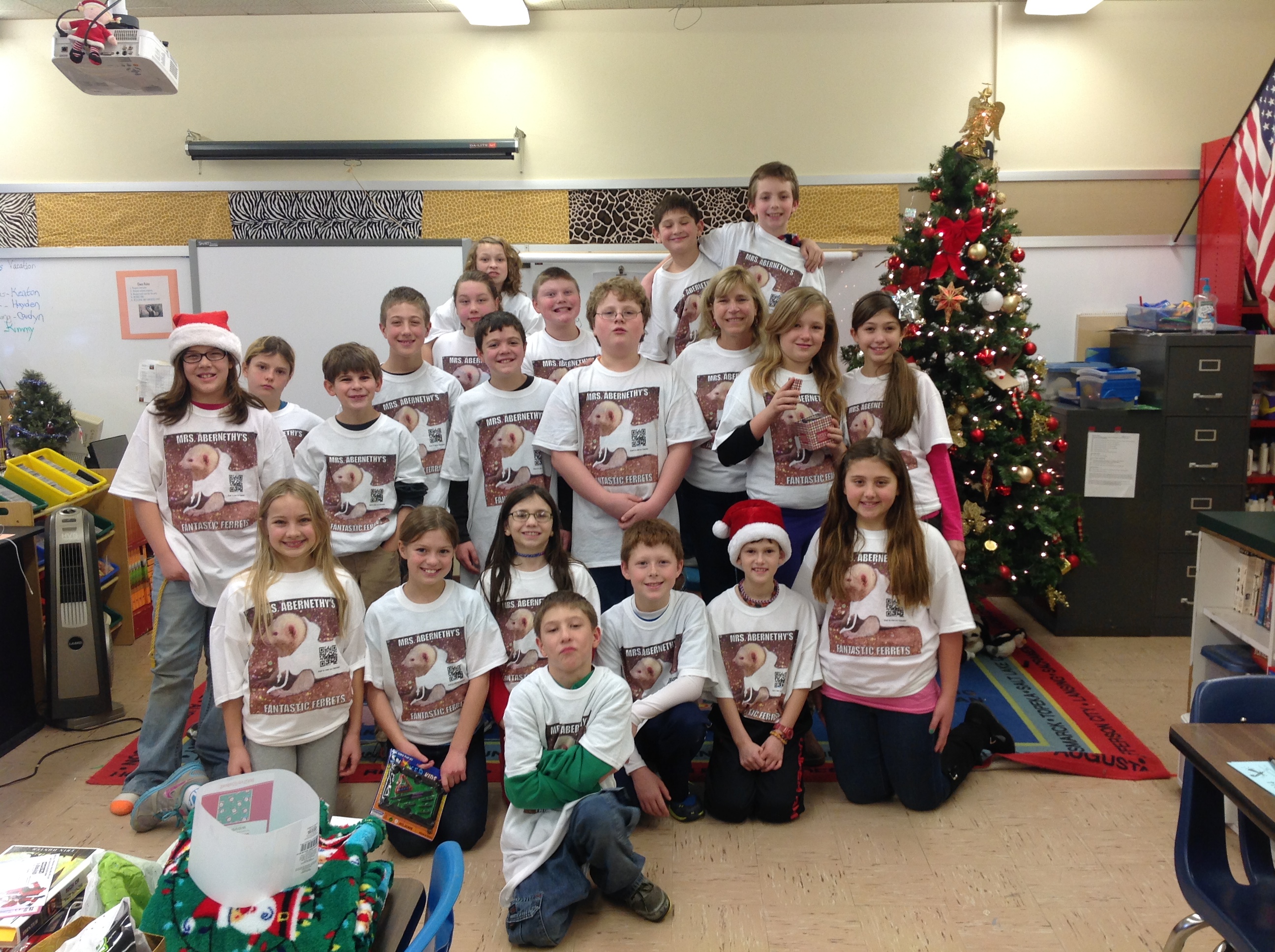
How Helping Kids Build a Strong Sense of Community Can Improve Their Confidence and Learning
READ on american essence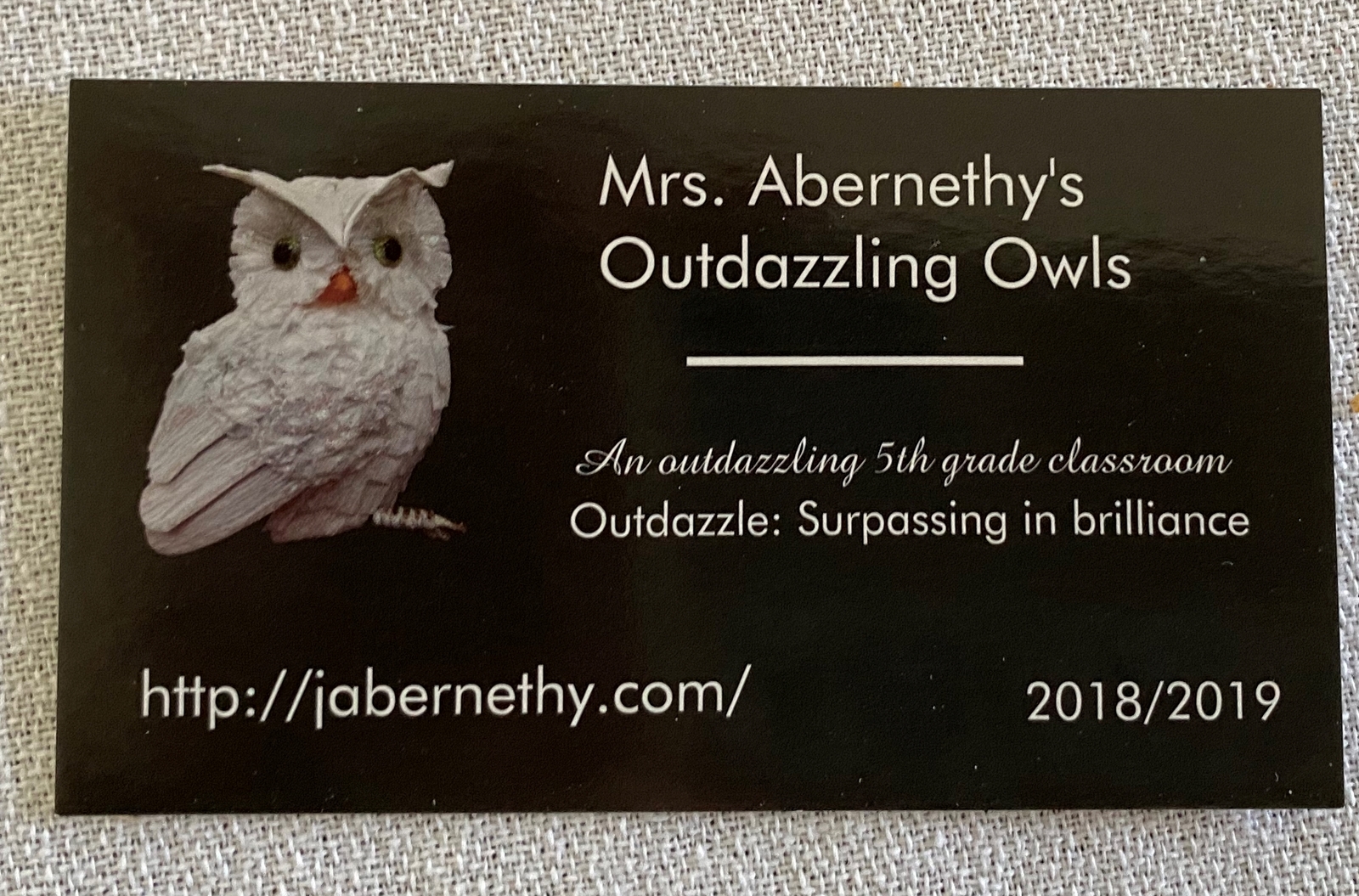
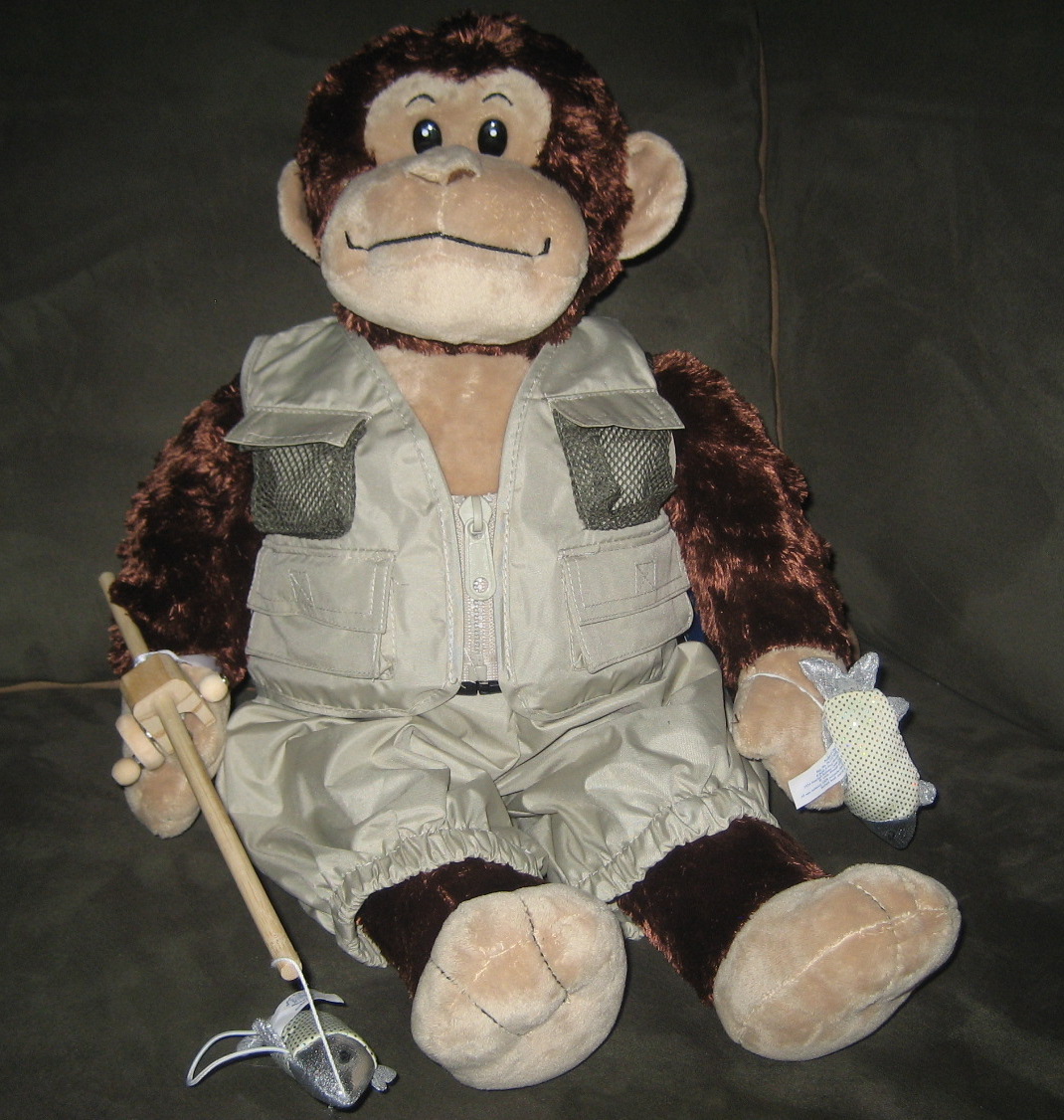
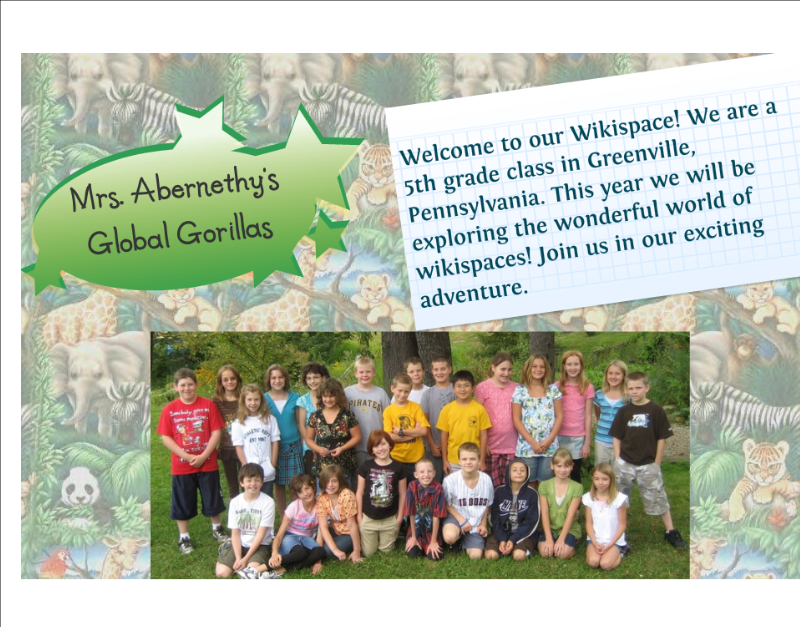

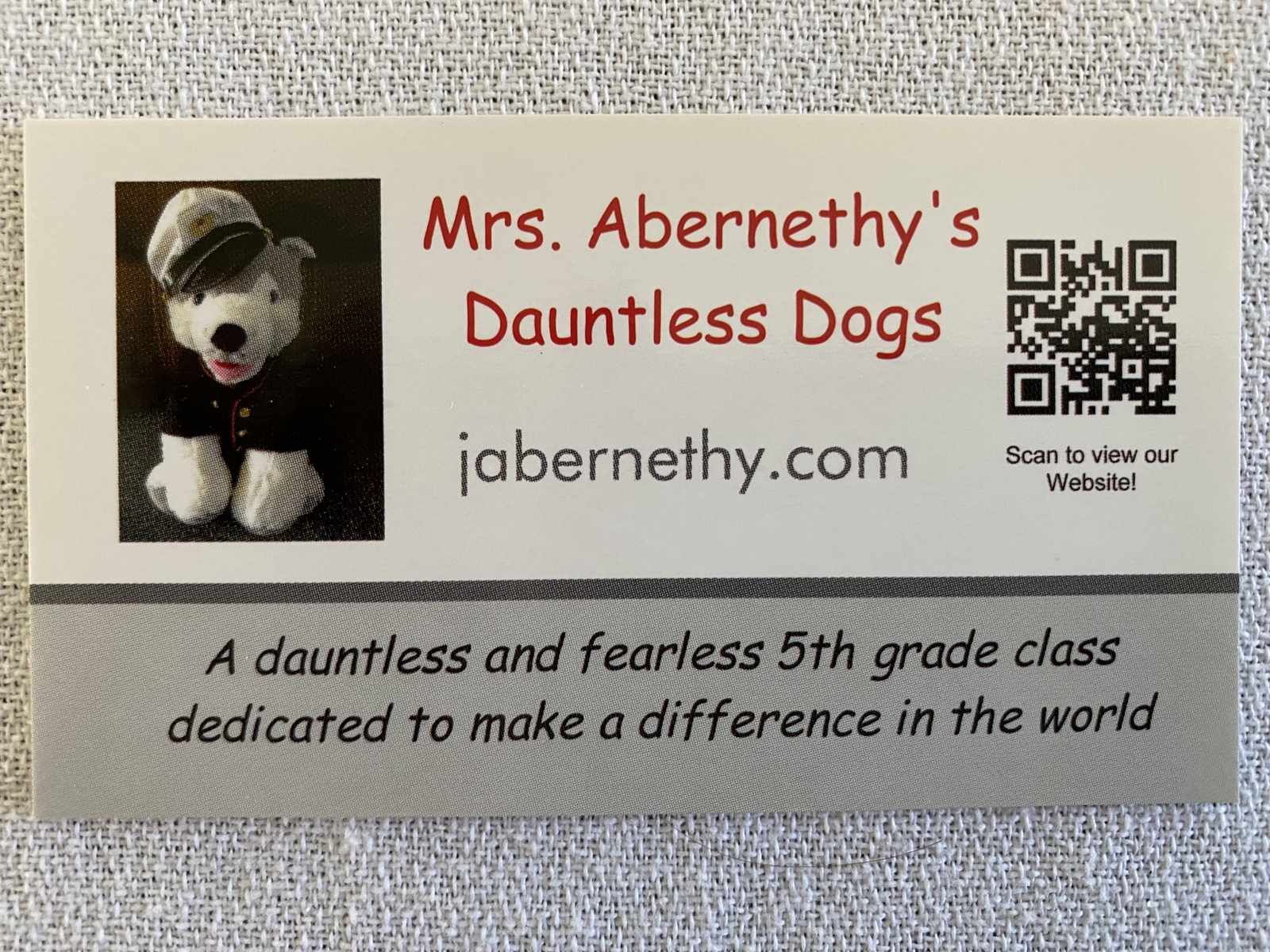
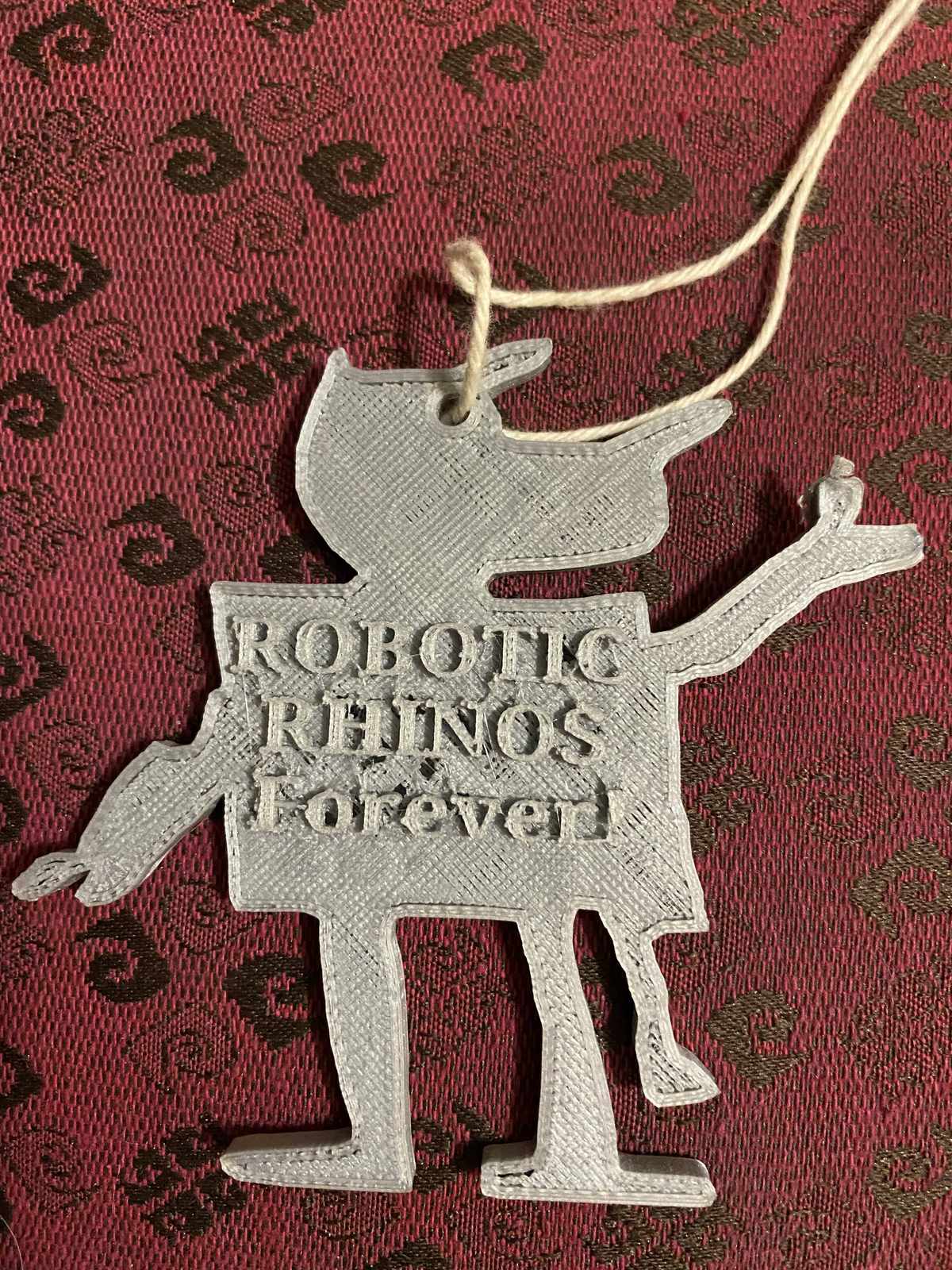

After they narrowed down their
choices, they must choose a spokesperson to convince the class that the animal
they have chosen is the best. If they had more than one animal, they would have
more than one spokesperson.
By this time, it was lunch and
recess already! On the playground it was so exciting to hear the kids talking
about the class animal that would be part of the name. I sometimes saw students
practicing their speeches. They were hooked. After recess, the speeches began.
After each speech, the animal’s name(s) was written on the board. Then we had a
vote and the animal receiving the most votes became part of the new class name.
The second day we worked on the
adjective that would go with the animal name they had chosen. You may think,
what’s the big deal? Well, if it wasn’t a big deal, do you think we ever would
have come up with Ponderous Pandas? Or Dauntless Dogs? Or Outdazzling Owls? We went
through the same process: working individually, then in groups, then presenting,
then voting.
Once we had a name, it was used for
everything. We had a website, a blog, and a YouTube channel. If our class did a
special project, we created an extra blog for that project, but they were all
marked with the class name and our mascot. Oh…the mascot. Well, the first
weekend after school started I either went to Build-a-Bear or the local Stuff
an animal store or Amazon to create a stuffed animal we could use as our
mascot. This stuffed animal needed to be quality, because I knew it would go
through a lot. You might think fifth graders are too old for stuffed animals
but if you could have seen these kids when I would bring in “Global Gorilla” or
“Powerful Penguin” you most definitely would not think so.
The mascot animal had its own blog.
It wrote about things that were going on in the classroom. That meant if we
were going somewhere, the penguin had to come with us. And if you ever saw one
of my classes on a field trip, you would think they were the paparazzi. They
would set the mascot up for a photoshoot on anything they found interesting and
when we got back to class, they would write a blog post about it. Some might
say, you let them use phones or iPads to take pictures. If it got them to
write, you better believe I did.
I believe it was in 2008, I had the
Global Gorillas and I bought each of my students a Global Gorilla t-shirt with
a picture of our class mascot and our class name on the front. In 2009, I took
it up a notch with the Techno Tigers. That’s when I started buying the pens
with our class name, website, and mascot. I got a deal if I bought 500 pens, so
that’s what I bought. My class and I gave those pens to EVERYONE! The best part
was they were the best pens anyone has ever used and some still work today. I
continued buying pens from the same company right up until my last year of
teaching and I am probably best known for those pens because anyone I ever gave
one to still has it. They never run out of ink!
What was next? Business cards, of
course. I started creating business cards for each class in 2009, too. So, the
Techno Tigers got t-shirts, pens, and business cards that year for Christmas
and that became a class tradition. It also became my husband’s nemesis. He once
added up how much money we were saving now that I’m not teaching anymore, but I
knew he was kidding. I always told my students that all of these gifts came
from Sam, my husband, so they worshiped him, and I know he thought that was
pretty cool even if he didn’t admit it.
So back to branding. A class name,
a mascot, business cards, pens, t-shirts, a website, several blogs, a YouTube
channel… Yes, I think Mrs. Abernethy’s fifth grade classes invented “branding.”
Check out: jabernethy.com/Class-Websites.html to see all of our different
personalities and “brands.”
The last few weeks of school can be brutal if you let them. For me, they were my favorite time of the year. They were a time of nostalgia, a time to tie up lose ends, a time to look back and a time to make memories that last forever.
The unsaid truth about the last two weeks is that the students are no longer being graded on their work. Teachers are required to submit grades so that they can be sent out to be printed on report cards and sent back to the school in time for teachers to approve them and make changes before the last day of school. There are two schools of thought among teachers. Some believe they can get their students to work hard right up until the last day if they continue teaching the curriculum as usual right up until the last day. I never took that approach.
I thought it was very important to teach students about how they get their grades. From the beginning of the school year, I gave my students two slips of paper each week. One had their current grades in each subject and the other told them what assignments they were missing or what assignments they could do over for a better grade. It was a cause-and-effect lesson, a push for them to do better, and a lesson that it was them who had the control over their grades, not me.
It was fascinating to watch my students learn that their grades had nothing to do with whether their teacher liked them or not. Suddenly the grades they were receiving weren’t just coming from the sky, and if they wanted good grades, they could actually achieve them.
I did do another thing that may have helped that lesson and I worry made life harder for them down the road. I allowed corrections to their work. If students returned work with corrections to their mistakes, I gave them full credit. If it was a test, I gave half credit. This was controversial, but I still stand by it. The students that made these corrections, and trust me not all took advantage of it, learned everything I had to teach them that year. If I had to guess these students also learned the bigger lesson I was trying to teach. Hard work is rewarded and grades are a product of hard work, not necessarily intelligence. I wish every child could learn that. Unfortunately, after they left my classroom, they were often not afforded these opportunities, but at least I warned them and by the end of the year, I taught all of them how to keep track of their own grades, so hopefully that helped.
However, I digress. Because my students knew where their grades came from it was important that they know when the grade cut off day was. So, what you may ask did my students and I do the last few weeks of the school year? We made time capsules.

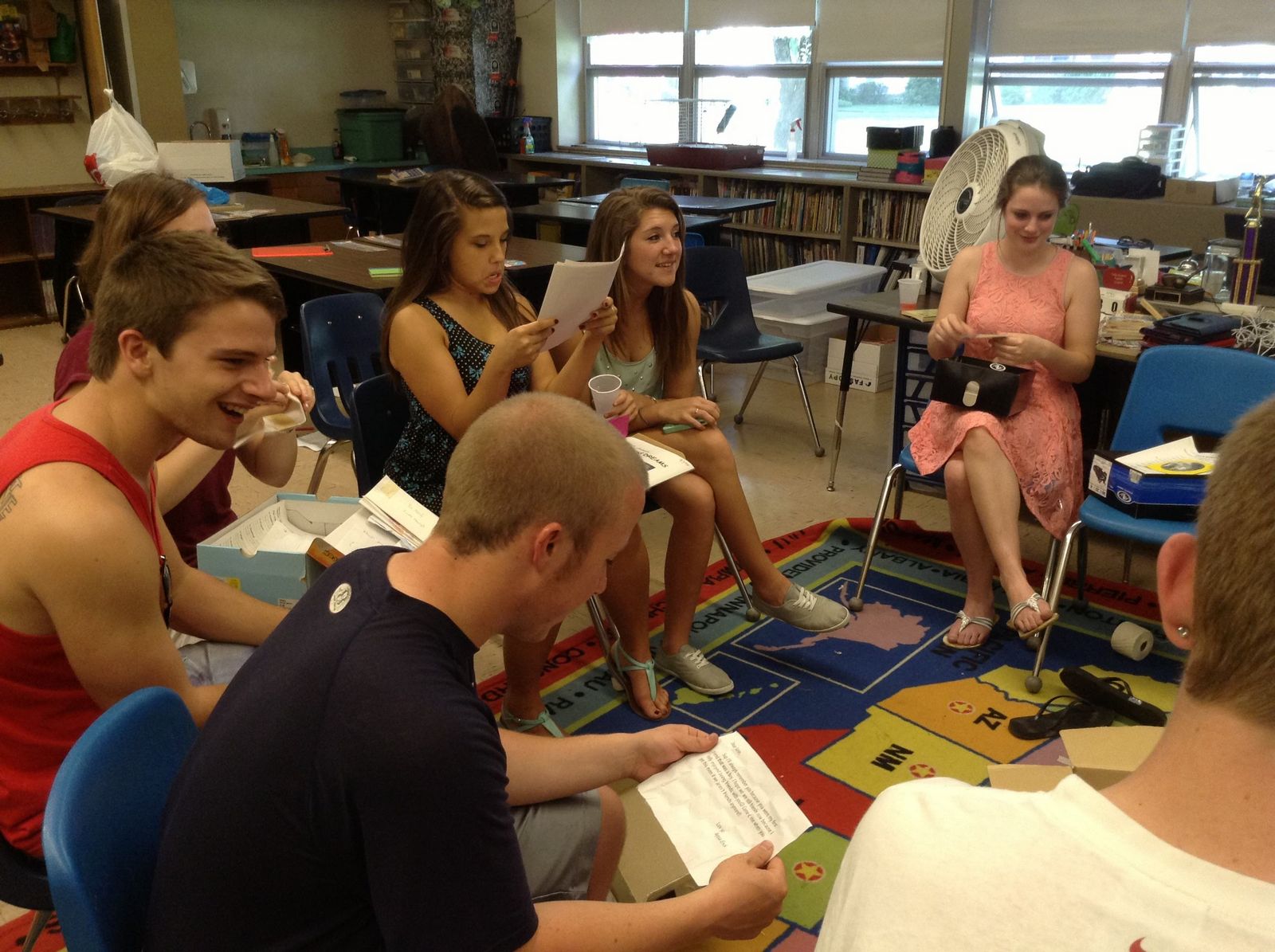

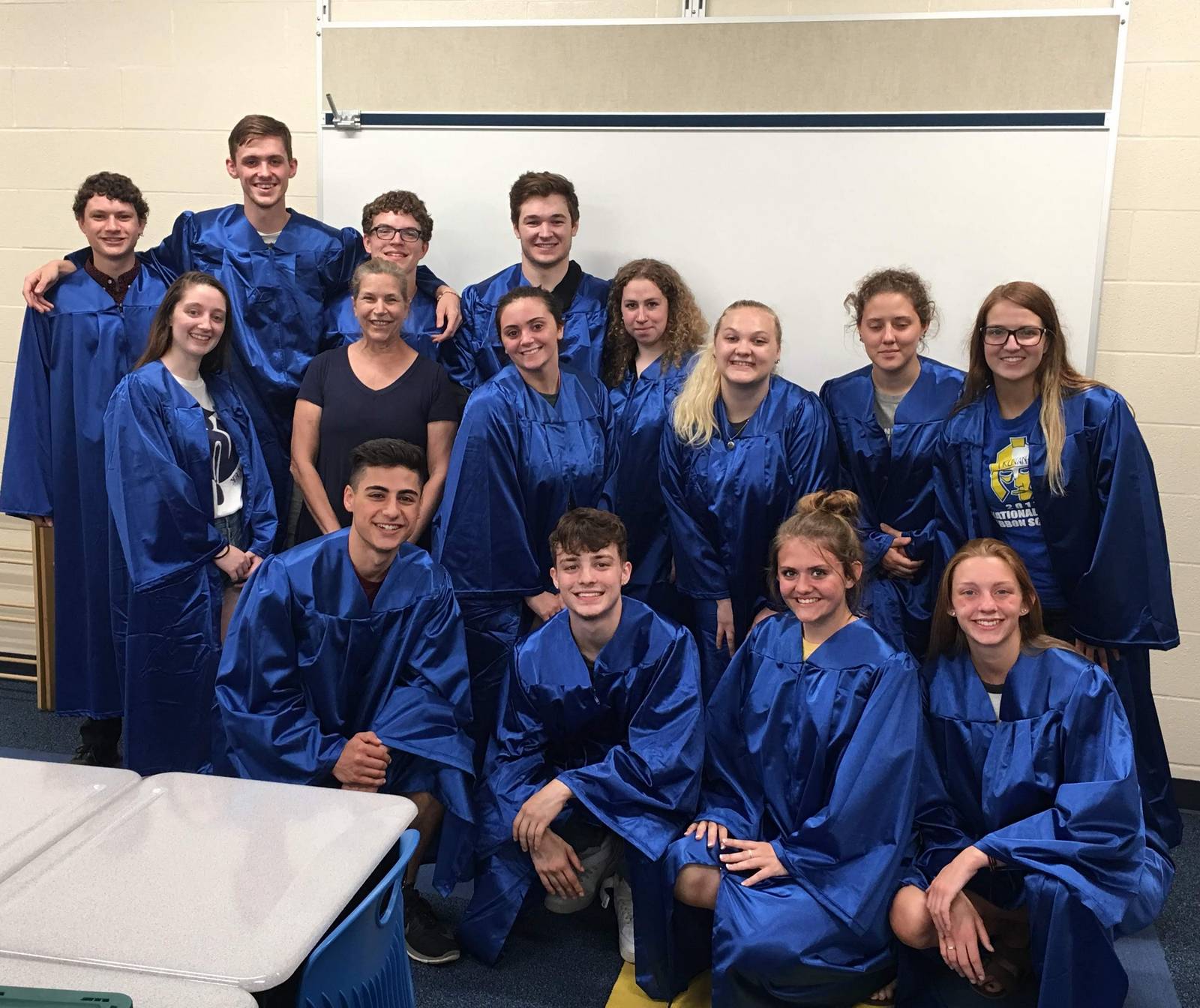
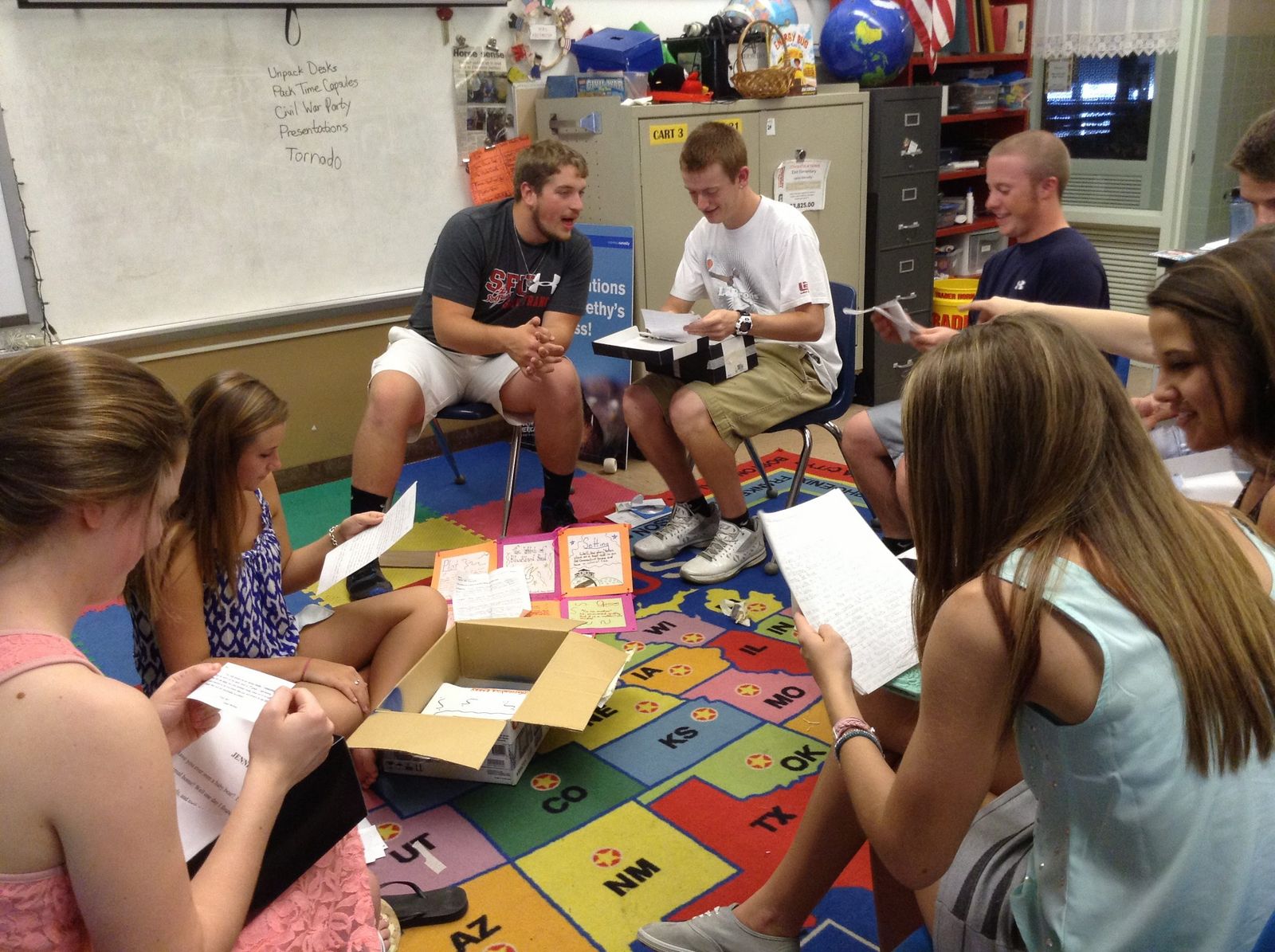
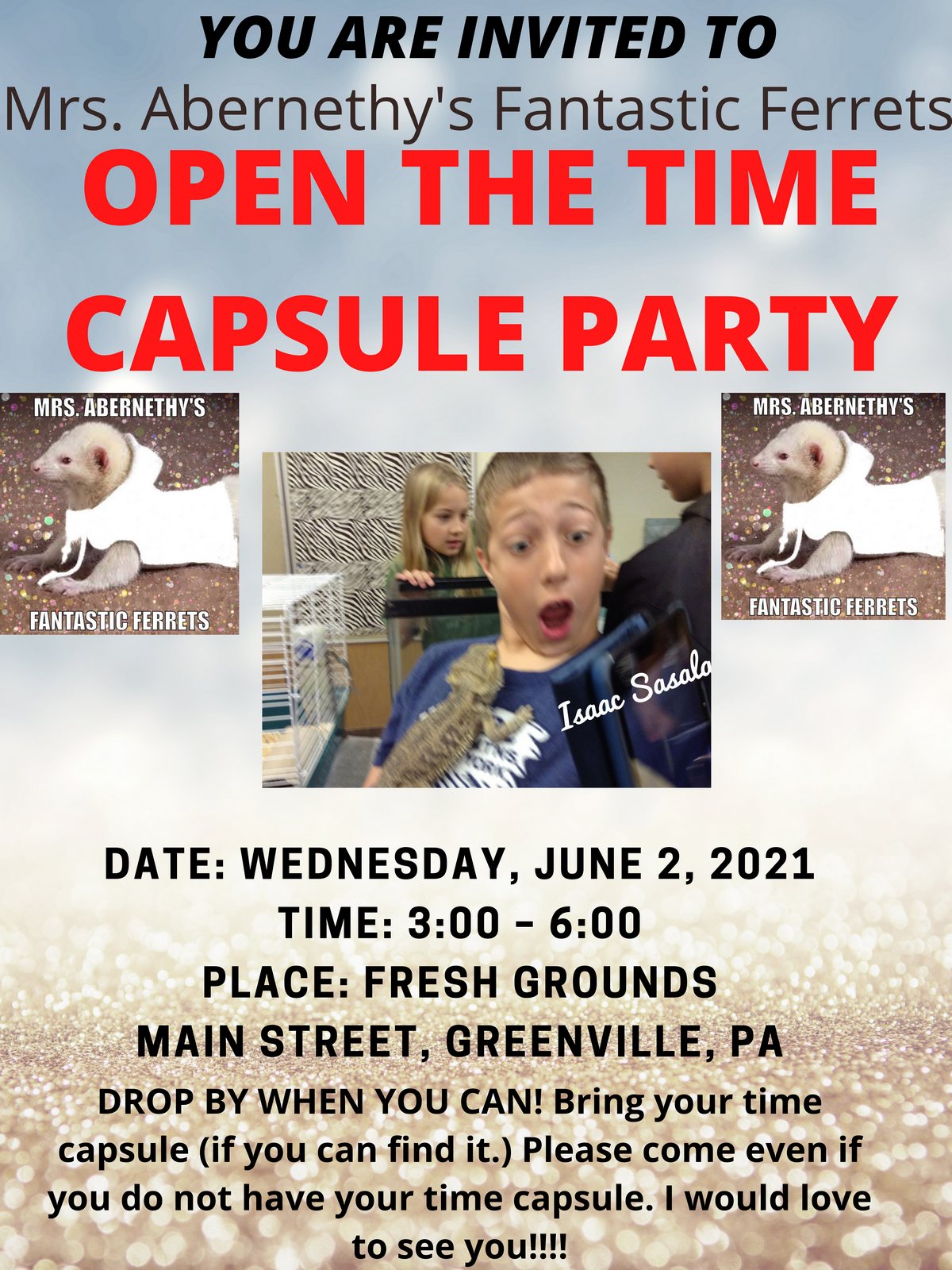
I would start by sending a letter home to parents requesting their help. In the letter I explained that their child would be creating a personal time capsule to be opened one day in May in the year they graduated high school. I asked them to send in a Tupperware container or a shoe box or another similar container. I explained that we would be gathering items to put in the time capsule at school and that parents were more than welcome to participate, too. If they wanted, they could send in sealed letters to their child to put in the time capsule or help their child choose a few special items from home they could put in it. The main thing I would stress in the letter was that I would be sending the sealed time capsule home on the last day of school and I would like it if they could find a safe place to put it for the next seven years. I would ask them NOT to bury it and NOT to throw it away even if they moved to another district or state.
The day I handed in my last grades of the year, I had a class meeting and I would explain the time capsule. As a class we brainstormed items we would like to put in the time capsule. There were always a few items I had saved throughout the year that I gave the students.
For example, “Time for Kids” always had a special “The Year in Pictures” edition that I thought was important to include. I had their first and last essays called, “Hopes and Dreams” and “What I Learned in 5th Grade” to pass out to them. At the beginning of the year, I had students fill out questionnaires asking questions like, “What is your favorite song?” “Who is the president?” “Who are your friends?” We used that questionnaire to create an end of the year questionnaire. I provided all of these for the students, but after all it was their time capsule and it was up to them to decide what they put in them. The only rule was that they could not put food in them. Thank goodness (so far) none have!
Then I told my students about the last items they needed to put in their time capsules. The letters. Students were encouraged to write letters to each other to put in each other’s time capsules. They could write whatever they wanted, but of course it should be kind. By this time of the year, though, I didn’t even need to say that.
By the end of the year, between me and my cell phone and the students and all the iPads we had thousands of photos. We also had our website, several blogs and lots of memorable projects. We all spent time looking at these and reminiscing. Students were encouraged to create digital projects for the blog on different projects we did and they could work with whoever they wanted.
On the second to the last day of school, a teacher stopped by my room and said, why is it so quiet in here? What are your kids doing? They all look so serious and hard at work. They were working on their time capsules. They were writing letters. They were creating projects for the blog. They were creating memories that would last long after they left my classroom. To this day, you or me or my students can go to jabernethy.com, click on websites, find their class and see what they were doing that day. And guess what? None of it was assigned and there was no grade. My work here was done and hopefully this intrinsic motivation has followed them into life.
I can’t end this article without telling you about the opening of the time capsules, because that is every bit as special as the creation. Each year in May, I would send invitations to the high school to my former students. At least a half dozen would be returned, because the student had moved. That’s when I would turn to social media to track them or their parents down to send their invitation. The date was always after school on a day there were no big sports events or important events for seniors. That worked every year except the year my most athletic boys made it into the baseball playoffs last minute and half of my class couldn’t come. That year was special, though, because they all visited me in my classroom in their caps and gowns a few days later.
When the students came in for the opening event, I always reveled in the fact that most of them had their time capsule in hand. It didn’t matter to me whether they had it or not. I was just so excited to see them. I always had a slideshow running on the Smart Board and a few laptops open with their old website and YouTube channel. There was punch and cookies and we talked and talked and talked. They reminisced about fifth grade and they told me about their future plans.
Finally, the time would come to open the Time Capsules. At first, there was laughter as they held up funny mementoes, like old t-shirts, or tutus, pictures or newspaper clippings. Some would question why they put certain things in their time capsule at all. But after a while, the room got quiet and they started reading the letters. I’ll never forget when I first realized that the letters were the most important piece of the time capsule. Two girls were sitting next to each other. I remember in fifth grade they were inseparable. They were quietly reading their letters and suddenly they both broke into tears and started hugging. They told me that they had met in my classroom and leaned on each other through some tough times that were going on at home. In the letter, one of them wrote about how much it meant to find a friend like the other and she said she hoped they would still be friends when she opened and read this letter. When I asked why they were crying, they both said, “Because we are still best friends!”
This was not unusual. The time capsules, the class names, the websites, the blogs all bonded to form a sense of community. When I met with last year’s graduating class, we met at a coffee shop in town. They were the first class to create a video talk show on YouTube. A few of the students admitted they still go online to watch those videos. One of the students reminded me of our class motto, “Once a Fantastic Ferret, always a Fantastic Ferret.”
On the second to the last day of school, a teacher stopped by my room and said, why is it so quiet in here? What are your kids doing? They all look so serious and hard at work. They were working on their time capsules. They were writing letters. They were creating projects for the blog. They were creating memories that would last long after they left my classroom. To this day, you or me or my students can go to jabernethy.com, click on websites, find their class and see what they were doing that day. And guess what? None of it was assigned and there was no grade. My work here was done and hopefully this intrinsic motivation has followed them into life.
I can’t end this article without telling you about the opening of the time capsules, because that is every bit as special as the creation. Each year in May, I would send invitations to the high school to my former students. At least a half dozen would be returned, because the student had moved. That’s when I would turn to social media to track them or their parents down to send their invitation. The date was always after school on a day there were no big sports events or important events for seniors. That worked every year except the year my most athletic boys made it into the baseball playoffs last minute and half of my class couldn’t come. That year was special, though, because they all visited me in my classroom in their caps and gowns a few days later.
When the students came in for the opening event, I always reveled in the fact that most of them had their time capsule in hand. It didn’t matter to me whether they had it or not. I was just so excited to see them. I always had a slideshow running on the Smart Board and a few laptops open with their old website and YouTube channel. There was punch and cookies and we talked and talked and talked. They reminisced about fifth grade and they told me about their future plans.
Finally, the time would come to open the Time Capsules. At first, there was laughter as they held up funny mementoes, like old t-shirts, or tutus, pictures or newspaper clippings. Some would question why they put certain things in their time capsule at all. But after a while, the room got quiet and they started reading the letters. I’ll never forget when I first realized that the letters were the most important piece of the time capsule. Two girls were sitting next to each other. I remember in fifth grade they were inseparable. They were quietly reading their letters and suddenly they both broke into tears and started hugging. They told me that they had met in my classroom and leaned on each other through some tough times that were going on at home. In the letter, one of them wrote about how much it meant to find a friend like the other and she said she hoped they would still be friends when she opened and read this letter. When I asked why they were crying, they both said, “Because we are still best friends!”
This was not unusual. The time capsules, the class names, the websites, the blogs all bonded to form a sense of community.
When I met with last year’s graduating class, we met at a coffee shop in town. They were the first class to create a video talk show on YouTube. A few of the students admitted they still go online to watch those videos. One of the students reminded me of our class motto, “Once a Fantastic Ferret, always a Fantastic Ferret.” The lesson: grades are important, as are memories in the classroom that last a lifetime.

What child, or adult for that matter, doesn’t love the thought of going on a treasure hunt? Did you know that there are real-world treasure hunts that you and your family can participate in no matter where you are traveling or where you live? Well, that is exactly what geocaching is! With summer upon us, geocaching is a great way to get outdoors and learn, and it’s fun for all ages.
There are millions of “treasures” or “geocaches” hidden all over the world. Yes, I said world! There are official treasures called geocaches registered on the internet site Geocaching.com. To find them, you must become a member and download the geocache app. Although the app does cost about $10, everything else about geocaching is absolutely free. After you make an account, you can search for “geocaches near me” or you can specify an area if you are going on a trip. After using filters like “within 5 miles,” or “easy,” or “handicap accessible,” you will come up with a list of geocaches you can search for. Choose one, and you are on your way to finding your first treasure!
If you are a teacher or even a parent, you can use geocaching as an educational activity, but most importantly it is a family activity that is fun for all ages. Here is how I used it in my fifth grade classroom. Use it as I did or adapt it to fit your situation.
Latitude and Longitude
One evening, I was preparing a geography lesson on latitude and longitude. As all good teachers do, I wanted to begin by making it relevant. I looked up the latitude and longitude of the school where I taught.
“Hmmm… interesting,” I thought to myself. “Those are the same numbers that most of the GPS coordinates begin with when I am looking for geocaches in the area with my friends after school.” The lightbulb went on, and after 40-some years I suddenly understood the real meaning of those “imaginary lines” I was taught about in fifth grade! I suddenly knew the meaning of the GPS coordinates, too. They were the same thing! Maybe I should be embarrassed, but I told you anyway. The moral of the story is I now knew how I was going to teach my students latitude and longitude. I would teach them about geocaching.
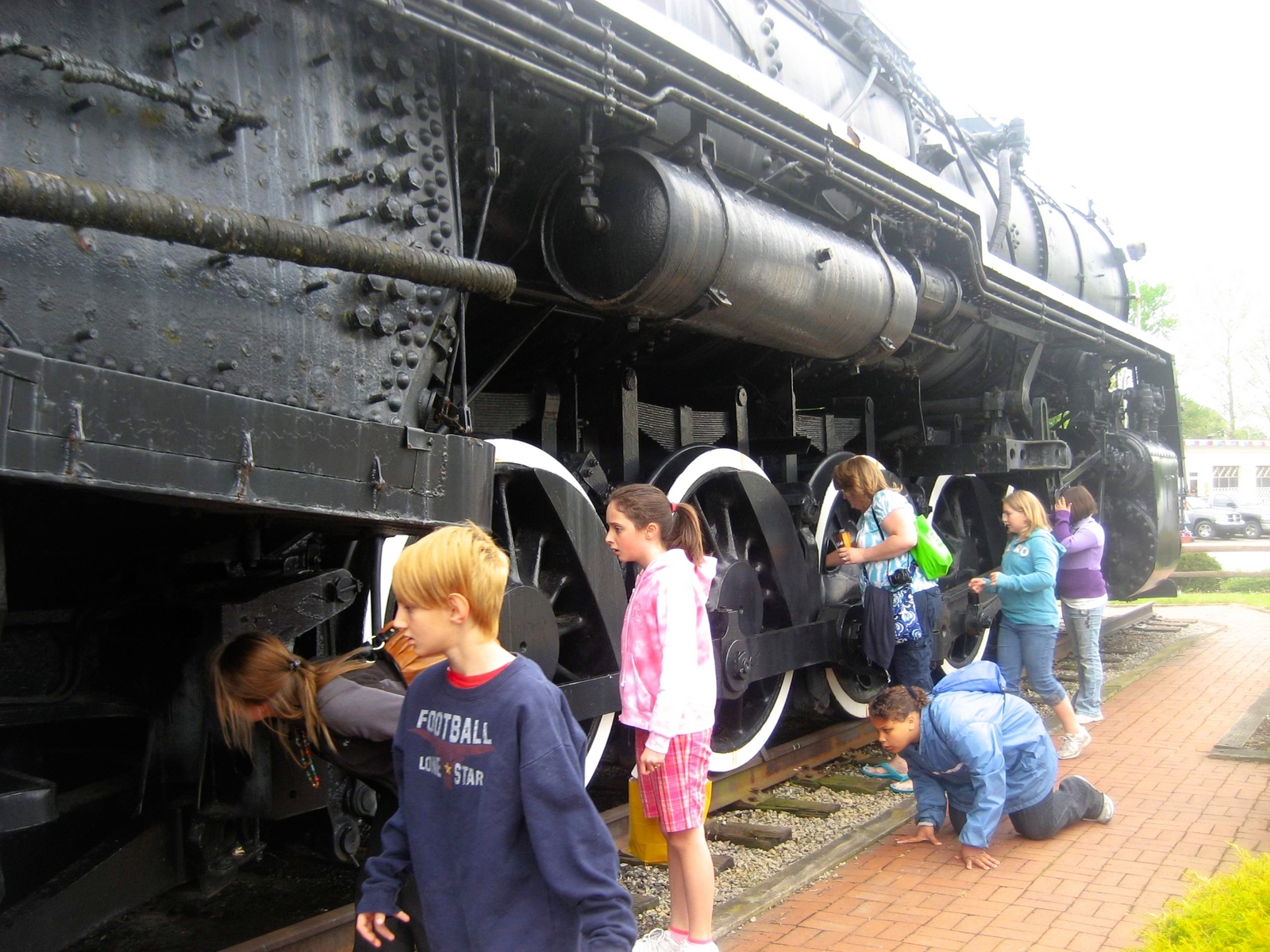
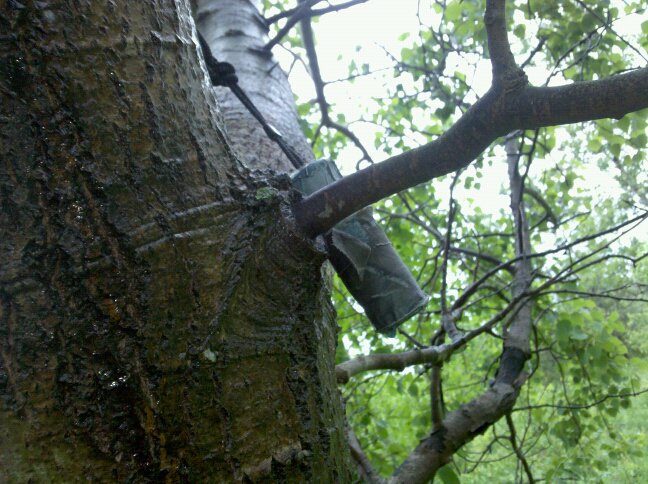
First, I needed to create a geocache, but what exactly is that? A geocache is a container of any size, ranging from micro to large. A micro geocache is only big enough to insert a rolled-up piece of paper as the logbook. All geocaches must have a logbook so that the finders can sign their names when they find it. Larger containers can hold anything from a few to many items (the treasure) and a logbook. The finder may take one item from the container but must replace it with an item of his or her own. This is really fun when you are geocaching with small children. Before embarking on the adventure, you have them go through their toys and find a few items to bring with them that they are willing to give up and swap out during the treasure hunt. After you sign the log and swap out treasure, you must put the geocache back exactly where you found it and exactly the same way you found it.
Back to teaching my fifth graders, I put together a container that held some stickers, erasers, and other various treasures. I also inserted a small notebook to use as a logbook. Then, I hid the container in the schoolyard habitat. After determining the GPS coordinates and writing them down, I was ready to teach my fifth graders about latitude, longitude, GPS, and geocaching.
The Lesson
Each student had a laptop with the Google Earth app installed. Students put in their addresses and looked at their houses. Then, I asked them to notice the GPS coordinates at the bottom of the screen. Students walked around the room and compared their coordinates to each other and discussed what the numbers meant, and quickly I heard such phrases as “west of my house” or “north of my house.” I was excited! They were beginning to understand what the numbers meant and that the increase or decrease in number correlated with direction. Next, I had the students open flat maps, and I introduced/reintroduced latitude and longitude to them. Just as the light bulb went on for me, I looked around the room and saw it light up in their faces as they connected GPS to latitude and longitude.
Finally, I asked them to get out their cell phones if they had one or grab a partner with one. I wrote the coordinates of the geocache I had placed in the habitat and asked them all to write it down on a piece of paper and bring it and their device with them to the schoolyard habitat. Using the “compass” app, I asked the students to find the coordinates they had written down on the piece of paper. Lots of whoops and hollers were shouted when they found the geocache, and I explained that they would learn about geocaching the next day.
To extend on the latitude/longitude lesson, any time we had a few extra minutes I would point to a city or landmark on a map or globe. Students would use whiteboards to write down a latitude/longitude guess for where that might be. Using our town’s coordinates as base, the students became pretty good at giving reasonable guesses. Some became excellent!
Geocaching
The next day, I taught the students about geocaching. We went to the geocaching site, watched all the videos, and discussed when and how they could do this wonderful activity with their families. My school district is in a small town with a population of around 6,000 people. It is situated in rural Pennsylvania and is 80 miles from a large city. I asked the students how many geocaches they thought might be in a 10-mile radius of their small town. They made some guesses, but none came close to the 347 geocaches listed after they did a search! I allowed them to play with the filters, and one student realized that there were 27 geocaches within a mile of the center of Greenville! This was a treasure hunt game they could play without ever leaving their town!
The beauty of geocaching, however, is that you can leave your town. You can leave your state and even the country. Geocaches are everywhere, and so are geocachers! Beware of muggles, though! What are muggles, you ask? They are those pesky people who don’t have a clue about geocaching. They are suspicious and they wonder what you are doing, or they find geocaches and don’t know what they are, so they throw them in the trash. Lucky for you—you are no longer a muggle!
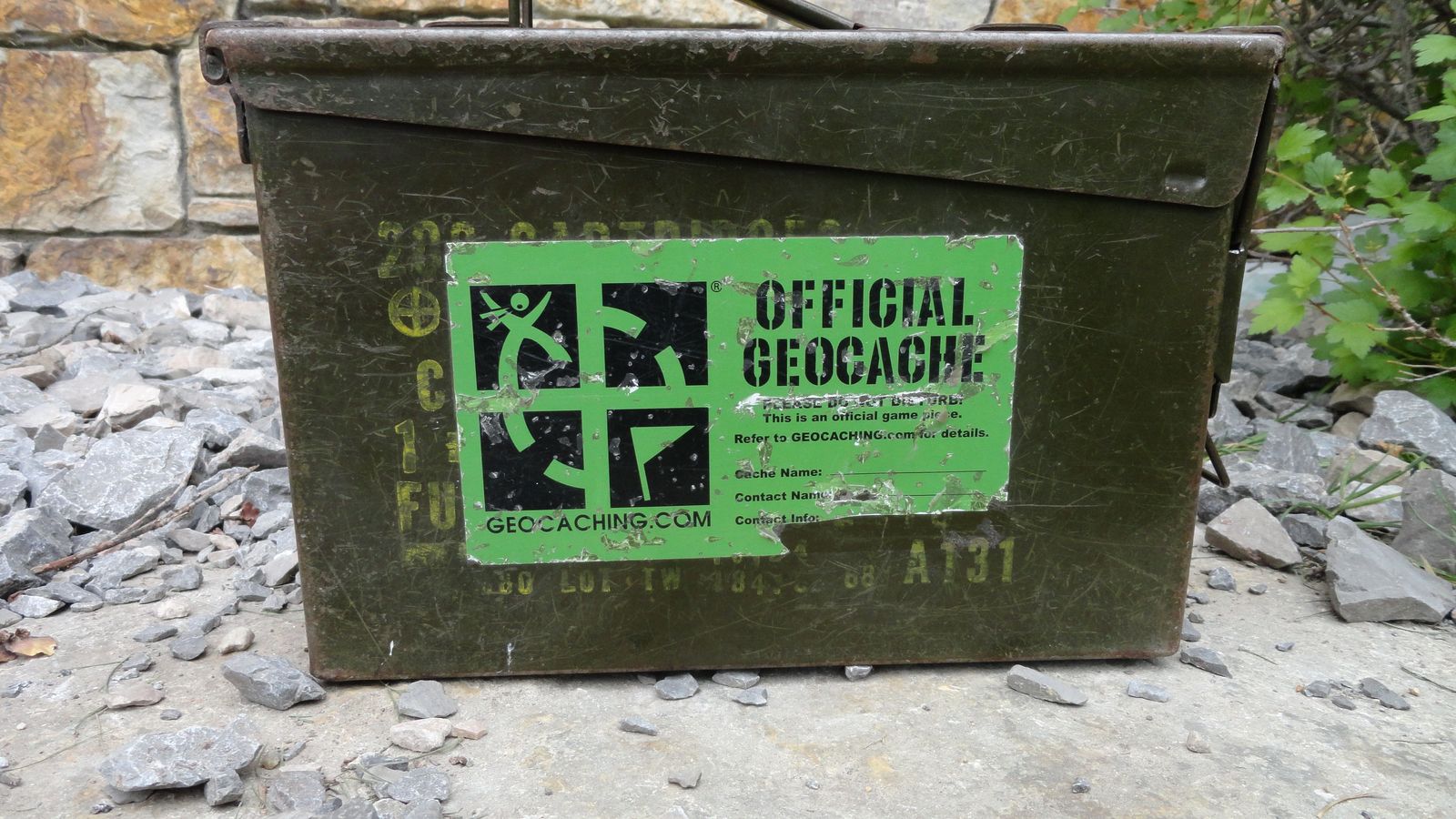


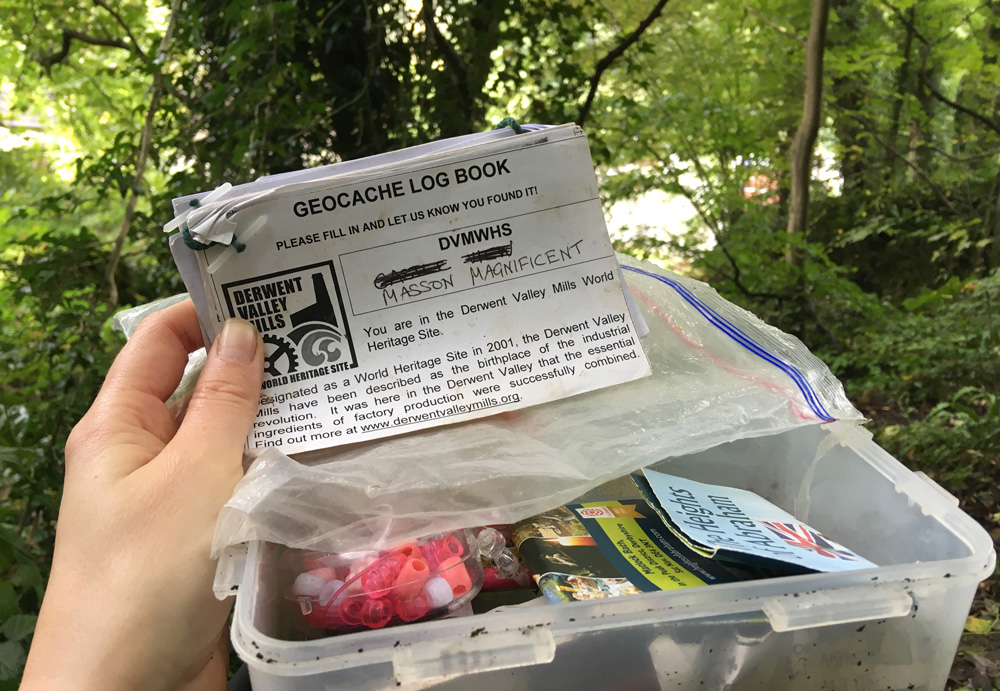
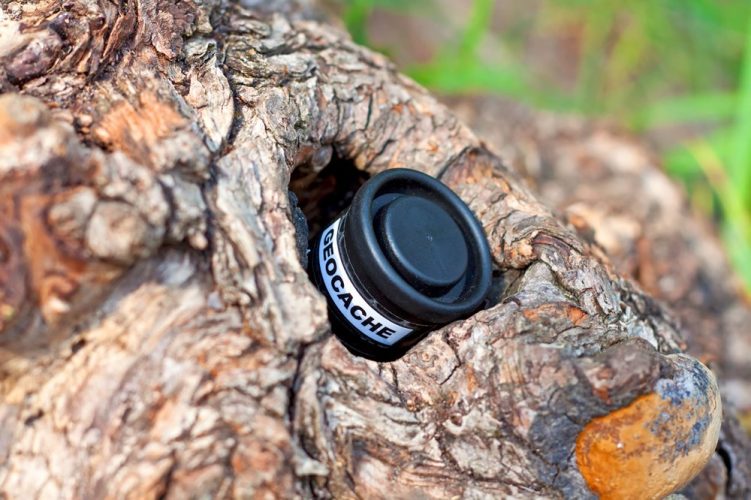
Early in my classroom career, I had a student. Let’s call her Susan. School had been in session for about a month, and a guest teacher came to my room to relieve me. She told me I was wanted in the conference room for a meeting. I walked into that meeting blind, not knowing who or what it was about. When I entered the room, I saw the entire instructional support team, including the principal, the special education teacher, the guidance counselor, several Title I support teachers, and the school psychologist. Also in attendance were Susan’s parents.
I asked why we were having the meeting, and I was told that it had been set up at the end of last year. Susan had been tested, and she was going to be moved from regular education to special education. I had only been teaching Susan for a month, but I could not imagine why she needed special education services, so I asked. I was told that Susan was extremely shy and anxious. She didn’t speak in school. When given schoolwork to do, she became frustrated and burst into tears. Everyone in the room said they had witnessed it, and they all agreed that a change in placement would be best.
When I had a chance to speak, I told them that this was not the girl I had been spending the last month with at all. I saw Susan as cheerful, always smiling and laughing. She was highly inquisitive and the first to jump on a classroom computer to look something up she did not understand. She did seem to struggle with reading a bit, but it was also her favorite class. She chose the class read-aloud book, the first in the Harry Potter series, and she was always right next to me while I was reading. I even found an extra copy for her so she could follow along.
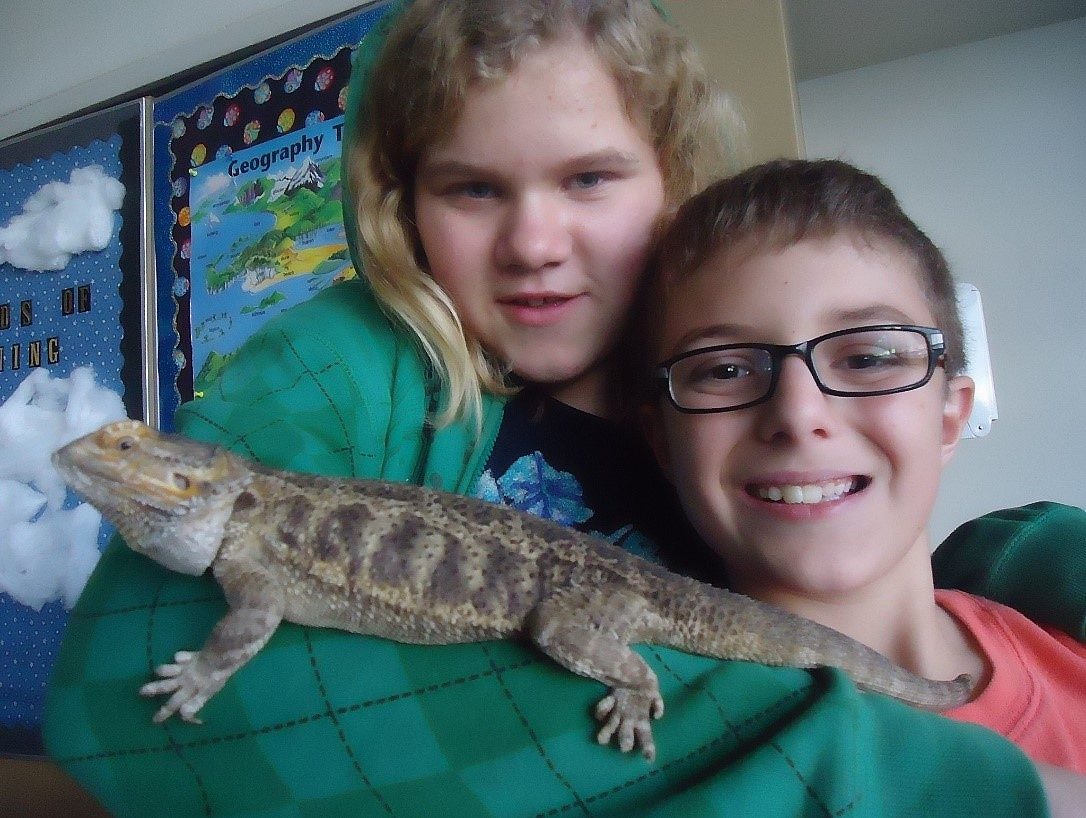





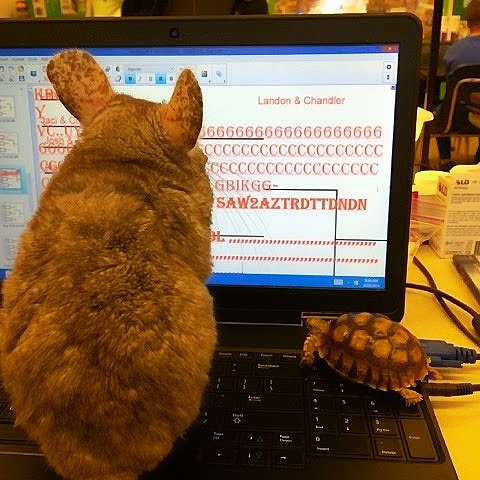
Next, the team began discussing how disorganized Susan was. I stopped them. I told them that every morning students were required to unpack their book bag, hang it in the closet, put their assignment book on their desk and all their other books in their desk, hand in all of their homework, and write their name under their lunch choice on the board. When all of those things were done, they could pick a pet (if they wanted) from the pets available and bring it up to the carpet for morning meeting. In a class of 28 students, Susan was the first person up to the carpet every day without fail, and she always had every item on the checklist completed. They looked at me with their jaws hanging, and Susan’s parents said, “Impossible!”
I explained that it was very possible because Susan was a highly motivated little girl. Although I had quite a few pets in my classroom, there was only one that she wanted to hold the most. It was a bunny named Oreo.
Her parents shrugged and said, “Yes, she’s been talking about that bunny at home.”
“Oh, yes,” I said. “She can bring any one of the pets home any weekend she wants.”
Her parents shook their heads and said, “No, thank you.”
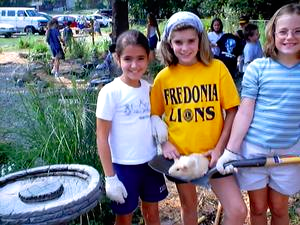
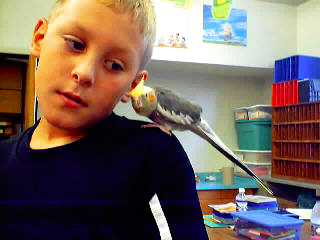
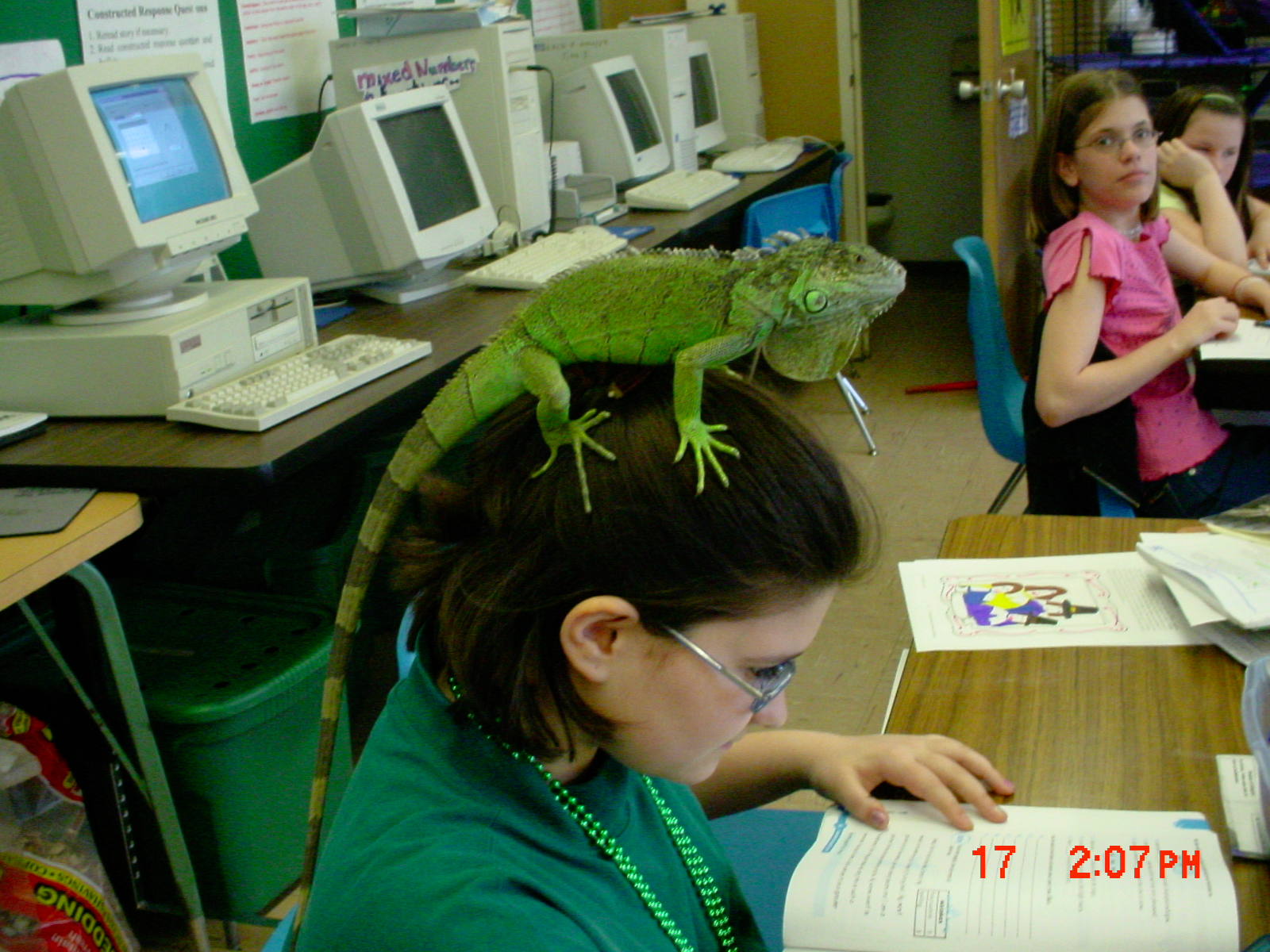
The meeting continued, and by the end, it seemed as if we were talking about two very different students. The team was adamant that she be placed in special education, and I did understand their decision. They had been watching her for five years, and I had only taught her for a month. I also knew that getting an Individualized Education Program takes a lot of work and a lot of time, so I did not want to mess that up. On the other hand, after hearing everything they had to say, I knew Susan had to stay in my classroom with me. At that time, schools did not do inclusion, so special education students left their regular education class in the morning and didn’t come back until it was time to go home.
I decided to make a proposal to the group. I asked them to go ahead and write up the IEP, but in it they should allow her to remain in my classroom for all subjects unless she was having trouble. Reluctantly, they agreed.
A couple of weeks later, my class put on a talent show to raise money to adopt a wolf. This happened in the late ’90s, so wolves were actually endangered then. My students put together a show and charged their parents to attend it in the evening. They also asked their parents for food and drink donations, and they charged them for that, too. They were quite the little entrepreneurs.
When the show started, I looked around the room for Susan’s parents. I wanted to make sure that I was standing close by when Susan came on stage. Susan got up on the stage. She had the bunny on top of her head. She started her comedic routine by telling the audience that she would show them 101 uses for bunnies. Her routine was hysterical. She moved the bunny around her body from her head to the pockets of her hoodie, around her neck, and she rapid fire told the uses. The audience was falling out of their chairs laughing. That is, except for her parents. Their mouths were wide open in shock and tears were running down their cheeks. I caught their eyes and they mouthed, “Thank you.” That evening, Susan and her parents took Oreo the bunny home for the weekend for the first of many times to come.
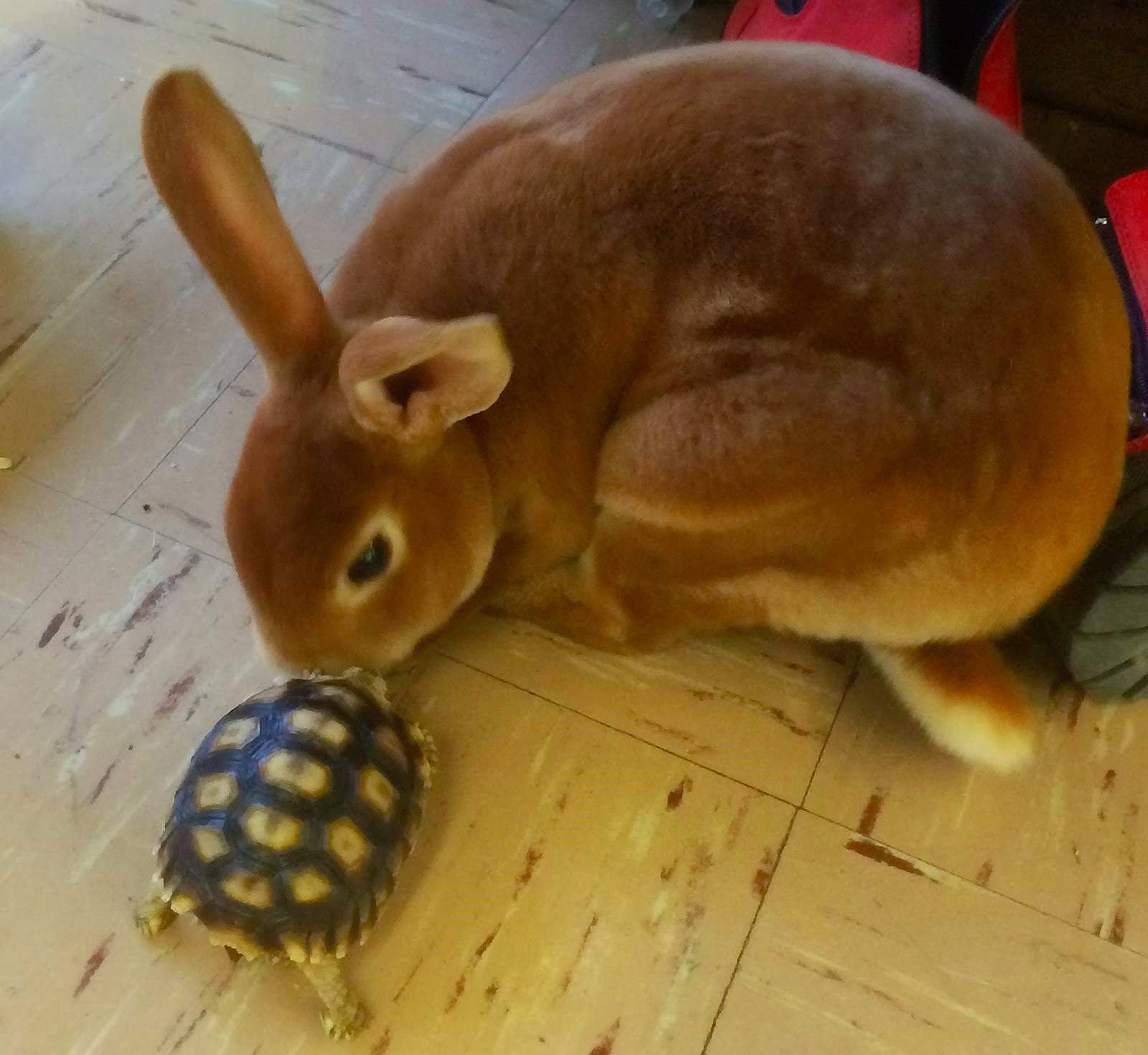
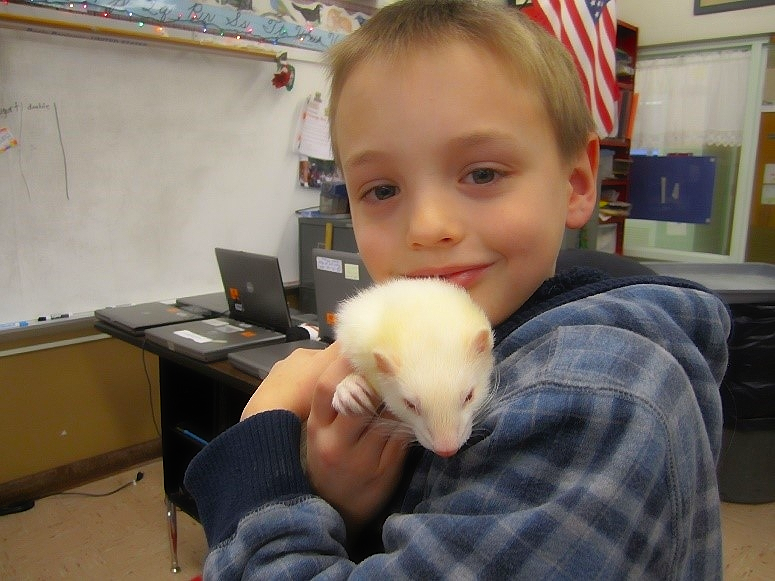
That’s just one of hundreds of feel-good stories I could share with you about how classroom pets can make a difference in a child’s life. Throughout my teaching career, I had many pets including lizards, a tortoise, rabbits, a cockatiel, chinchillas, ferrets, rats, guinea pigs, an iguana, fish, turtles, frogs, and even a baby lamb! Pets were an integral part of my classroom, and they played an integral role. Academically, students researched how to care for them, or if one got sick or pregnant, they researched that. Students included them in videos they were creating on serious topics. They wrote stories about them, creating children’s books that we printed and sent to Africa for a class that we regularly Skyped with. They created PowerPoint presentations on them describing their animal classifications and characteristics. They read books to the pets. They cleaned the pets’ cages and fed and watered them daily. They took pictures of the pets and learned to use photography editing software. Beyond academics, the pets were used in behavior management programs, not just for my class, but for students with problems in other classrooms. They helped students deal with topics like death, and they comforted students when they were upset about something. Most of all, they provided love!
Friends, family, and especially former students, I would love to hear from you. Do any of my articles speak to you? Do you have any ideas for articles? Do you remember a significant activity or topic you enjoyed when I was your teacher? Do you just want to say hi? Please leave me a comment!
